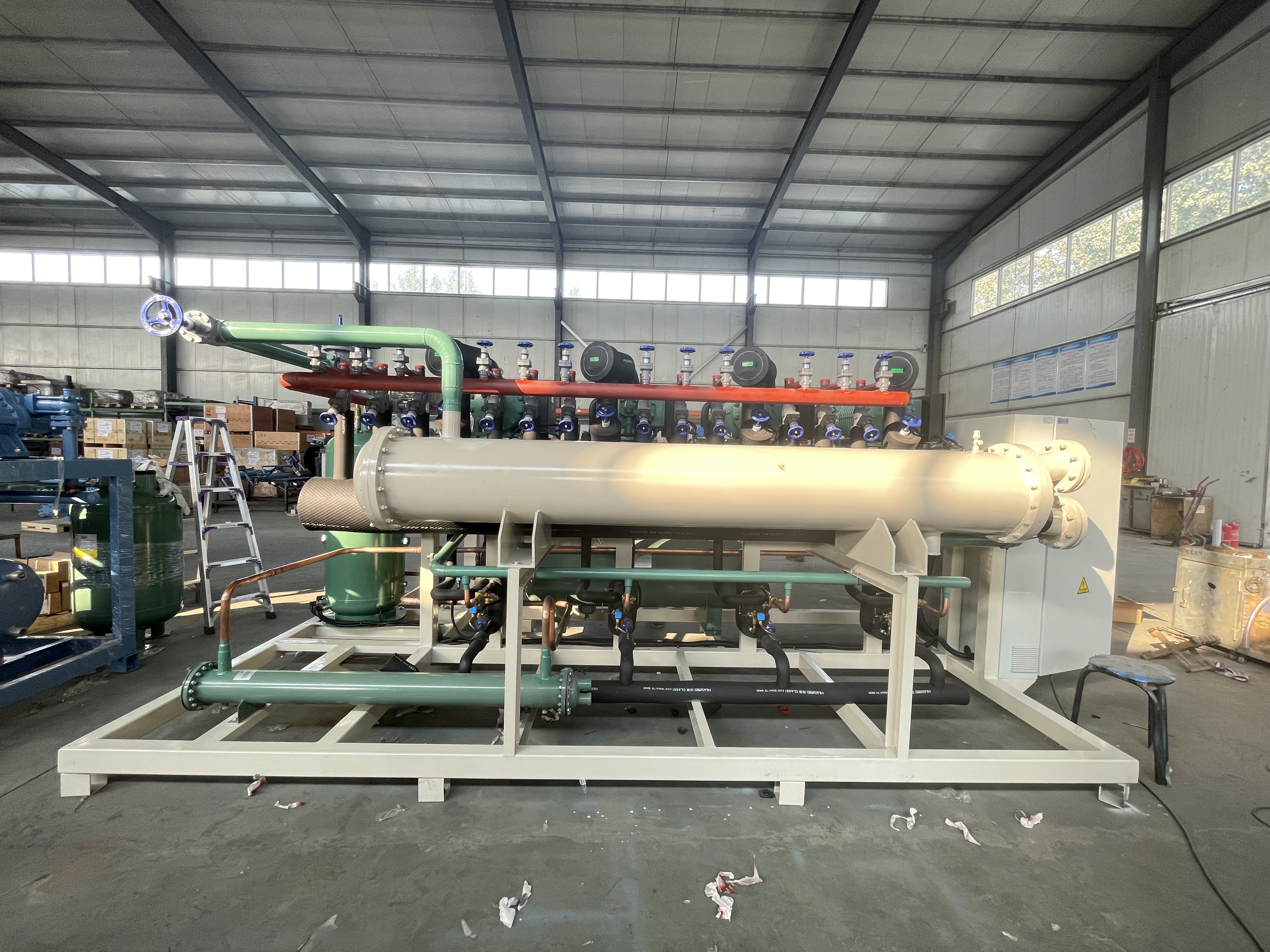Difference Between Flouded Evaporator and Dry Expansion Evaporator
Flouded Evaporator and Dry Expansion Evaporator are two different evaporator design methods, the main difference is reflected in the distribution of refrigerant in the evaporator, heat transfer efficiency, application scenarios and so on. Here's a comparison:
1. State of the refrigerant in the evaporator
• Flooded Evaporator
The evaporator shell is filled with liquid refrigerant (usually covering 70% to 80% of the heat transfer tube bundle), the refrigerant boils outside the tube to absorb heat, and the steam after gasification is sucked away by the compressor.
o Features: Full contact between refrigerant and heat transfer surface, high heat transfer efficiency.
• Dry Expansion Evaporator
o The refrigerant enters the evaporator in the form of a mixture of gas and liquid after being throttled through the expansion valve. When flowing in the tube, the refrigerant is gradually completely vaporized, and the outlet is superheated steam.
o Features: The refrigerant flow is precisely controlled by the expansion valve, and there is no liquid refrigerant accumulation in the evaporator.
2. Heat transfer efficiency
• Flooded Evaporator
The heat transfer tube is completely immersed in the liquid refrigerant, the boiling heat transfer coefficient is high, and the efficiency is better than that of the dry type (especially for large cold situations).
o However, it is necessary to pay attention to the problem of possible retention of lubricating oil, and an oil separator is required.
• Dry Expansion Evaporator
o The refrigerant may not be in uniform contact with the tube wall when flowing in the tube, and the heat transfer efficiency is low, but it can be improved by increasing the flow rate.
o Lubricating oil can be circulated with the refrigerant back to the compressor without additional handling.
3. System complexity and cost
•Flooded Evaporator
o Requires large refrigerant charge (high cost), oil separator, level controller, etc., the system is complex.
o Suitable for large chiller (such as centrifugal, screw compressor).
• Dry Expansion Evaporator
o Small amount of charge, simple structure, low cost, easy maintenance.
o Common in small and medium-sized systems (e.g. household air conditioners, heat pumps).
4. Application scenario
• Flooded Evaporator
o Large cooling capacity, stable load occasions (such as central air conditioning, industrial refrigeration).
o Scenarios that require high energy efficiency (such as data center cooling).
• Dry Expansion Evaporator
o Occasions with large load fluctuations (such as household variable frequency air conditioners).
o Applications that are sensitive to the amount of refrigerant charged (such as environmentally friendly refrigerant systems).
5. Other differences
Contrast item full liquid dry
Oil return requires oil separator lubricating oil to return naturally with the refrigerant
Refrigerant type NH₃, R134a Suitable for a variety of refrigerants (such as R410A)
Control difficulty Precise control of the liquid level depends on the expansion valve adjustment
The ratio of energy efficiency (COP) is relatively high and relatively low
Sum up
• Choose full Flooded Evaporator pursue high energy efficiency, large cooling capacity and stable working conditions.
• Choose dry: Focus on cost, flexibility, miniaturization or variable load scenarios.
In practical application, factors such as cooling demand, cost and maintenance complexity should be considered comprehensively. For example, large commercial buildings may use Flooded Evaporator chiller units, while dry evaporators are commonly used in home air conditioners.
Post time: Apr-14-2025

